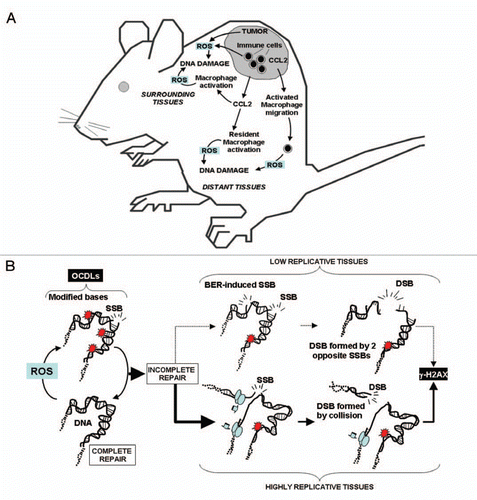Figures & data
Figure 1 Tumor-induced DSB formation in vivo. (A) Tumors could promote DSB formation in normal tissues in two ways. First, through persistent ROS release which directly target DNA of surrounding tissues. Second, tumor cells generate an immune response leading to cytokine production, including CCL2, by tumor-infiltrated immune cells. CCL2 then targets both surrounding and distant normal tissues and recruits and/or activates macrophages which, in turn, induce the production of ROS in those tissues. However whether the activated macrophages present in the distant tissues were resident and activated in situ or whether they were activated elsewhere, such as in the tumor, and migrate to the distant tissues is still to be determined. (B) ROS affect normal adjacent and distant tissues through the induction of abasic sites, base lesions (red spots) and/or single strand breaks (SSBs) resulting in the formation of OCDLs. While isolated damages are generally repaired efficiently, OCDLs are more difficult to repair, and DSBs in both replicating and non-replicating cells can be formed indirectly by the base excision repair (BER) pathway when a BER-induced SSB happens to be generated opposite a pre-existing SSB, or two nearby clustered lesions on complementary DNA strands can produce a DSB. In highly proliferating tissues, the replication machinery significantly increases the risk of DSB induction as accumulating oxidative lesions can result in DSBs formation due to the collision of replication forks with a damaged DNA template.
